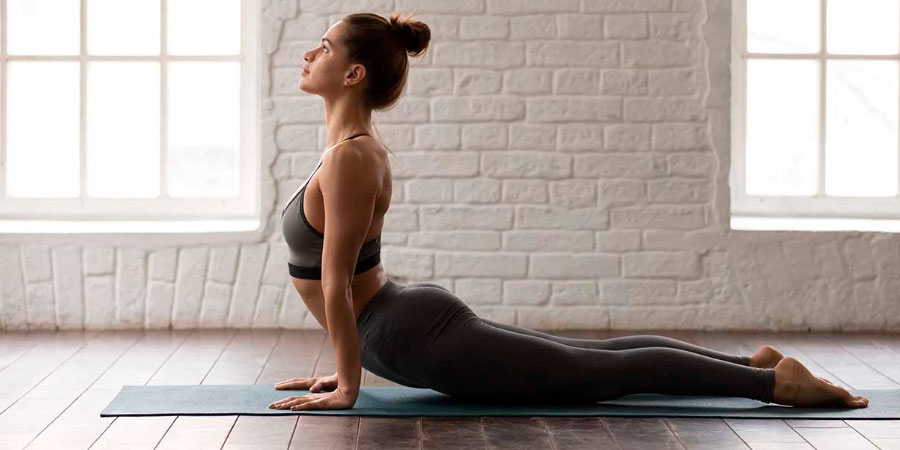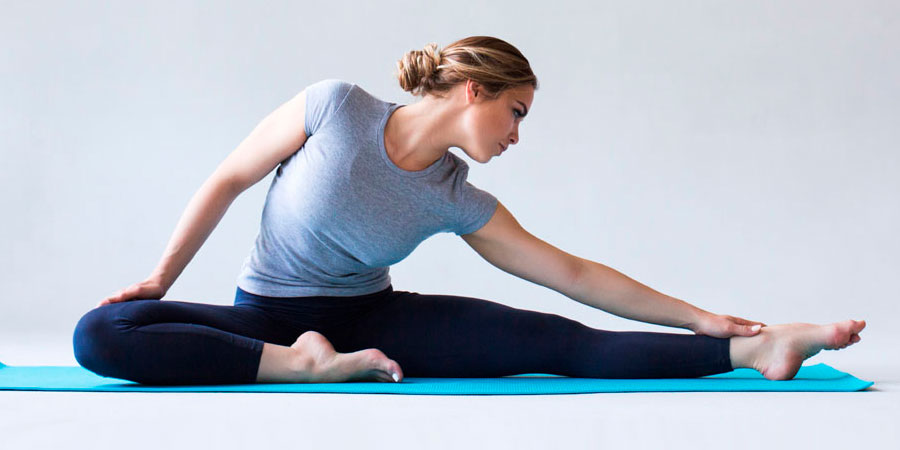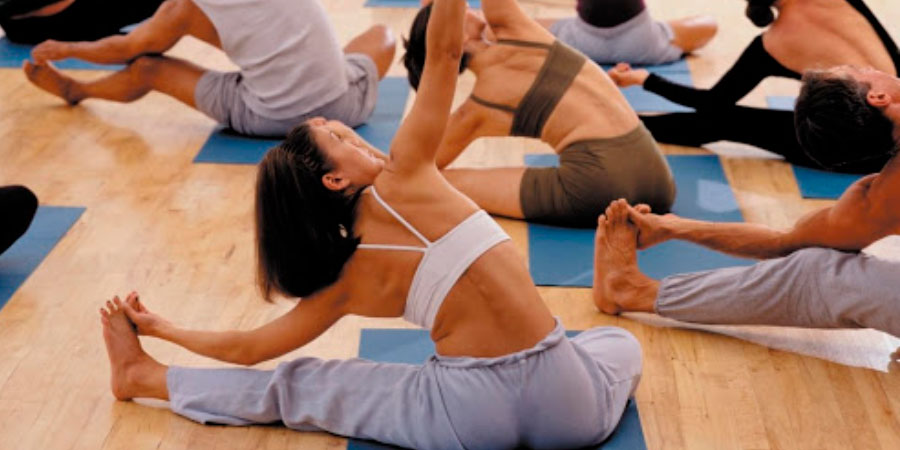One is a holistic discipline originating from ancient India, the other a specific physical system devised by a German anatomist in the early 20th century, but there’s much cross-over – and therein lies confusion – between yoga and Pilates.
As practices today, yoga and Pilates are both celebrated for their numerous health benefits, from offering connection to the body and stress relief, to developing flexibility, strength, control and endurance. There are countless interpretations of both disciplines (and one person’s balance class is another person’s cardio) but what links them both is breath work.
Put simply, “the biggest difference between the two,” Jill Simpson, founder of yoga, Pilates, ballet and barre studio Ebb&Flow explains, “is the emphasis on the spiritual side in yoga classes.”
Zoe Bertali, yoga teacher at studio The Refinery elaborates: “Yoga is an integrated health management system using breath, movement and meditation to unite mind, body and spirit. It also incorporates elements of philosophy, science and an ethical way of living. Classes can range from gentle and nourishing to challenging and sweaty.” Indeed, there’s a yoga class for everyone out there; from the various more traditional forms like hatha and ashtanga to the creative interpretations such as antigravity yoga, laughter yoga, and even karaoke yoga.
“Pilates was created by Joseph Pilates who was an anatomist and a mechanical genius,” Bertali says. “It is a physical system that uses very specific targeted exercises to improve strength, flexibility and posture with particular focus on the core. It is a disciplined practice that needs to be done on a regular basis to provide benefit”.
There tends to be fewer wild variations of Pilates teachings, with traditionalists favouring mat classes and those seeking more fitness-focused workouts opting for classes on resistance-based reformer machines. Classical Pilates, which marries mat work with a whole host of Pilates apparatus, is considered to be the practice in its truest form.
If you’re looking to develop core strength and balance, when practiced regularly yoga and Pilates are both ideal exercises for this. Given that many of the poses in yoga and exercises in Pilates involve supporting your bodyweight, they also work various muscles all over your body.

Generally, Pilates is a disciplined practice that requires small movements focusing on various areas of the body. Simpson says that while Pilates students primarily work on core strength (as noted above), they reap “added benefits of muscle toning, overall strength, body control, and flexibility”.
Bertali adds that “if you like a more structured workout without the cardio component this could be the workout for you.”
She also notes that yoga can help increase strength and flexibility through muscles and joints. “In active, fast-paced classes you are likely to build a lot of heat in the body which has a great regenerative effect” and, of course, you will burn calories.
“In slower practices such as Yin yoga, where you hold the postures for longer, you begin to work on stretching and moving the fascia which is the deeper connective tissue around the muscles and joints, which ultimately helps with flexibility.”
Research from MINDBODY has shown that 70 per cent of those who do yoga or Pilates say that it relieves stress for them. Both practices teach breathing techniques that can help to combat feelings of stress and anxiety, while both traditionally encourage students to align the body with the mind and spirit, taking time to focus on self-care.
Being a holistic system, yoga is as concerned with the mind and spirit as it is with the body. Simpson says, “As well as yoga being a physical practice, it also includes a meditation practice. Taking the time to connect with the body, breath and mind – having the opportunity to slow down in our busy lifestyles and focus inwards to ourselves”.
However, Bertali feels that the physical postures in yoga, in addition to the breath work and meditation, can benefit the mind as much. “Yoga has an extremely balancing effect on the nervous system through the use of deeper breathing. It is a very detoxifying practice through the twists and turns of the postures, helping to bring hydration and fresh blood supply to the organs and joints. The focus and concentration required in some of the postures keeps you very anchored in the moment and out of the distractions of the day, which helps to create a bit of space in the mind.”
This is true of Pilates too. “As Pilates is a slower paced discipline that also focuses on the breath work, it can be extremely meditative and stress relieving,” Bertali says.
Simpson adds, “Pilates joins the body with the mind, it requires good concentration of your body and breath with a deep focus needed for advanced level Pilates all of which can help to boost your mental health.” But don’t expect classes to focus on meditation.

It’s also likely that with both yoga and Pilates – as one could argue with all workouts – that the simple opportunity to steal some ‘me time’ is another reason they’re celebrated for stress-relief, as MINDBODY’s Wellness Index demonstrates with a correlation between the amount of headspace people get and their levels of overall wellness.
Both yoga and Pilates are often recommended by doctors and sports therapists as aiding rehabilitation post-injury and also to complement various high-impact sports.
Bertali explains that “As they can both be slower, controlled practices, they can be used for rehabilitation for specific injuries through use of targeted postures. Equally for people recovering from depression or trauma, the re-balance of hormones created via physical movement and breath can have a beautiful calming effect on the body and the mind”.
Specifically, Simpson feels that Pilates may be more beneficial for recovery, while yoga may help prevent sports injuries and ailments. “Pilates is a series of targeted movements and adaptable solutions when injury or chronic pain impairs movement and performance. Specifically, Bertali says, “it can have a very restorative effect on lower back pain and poor posture”.
“Yoga is fantastic to aid with the stretching of muscles for people who play a lot of sports/run/cycle,” Simpson says. “Yin yoga would help support these people with their training and recovery to slow down and stretch into targeted areas”.
With specific adaptations, yoga and Pilates are both considered safe – and highly beneficial – in pregnancy.
One of the most popular prenatal classes, yoga, helps to strengthen your core muscles, ease back pain and maintain muscle tone while being a gentle exercise that’s also kind to your joints and helps you to relax.
Simpson says that in prenatal classes, “We address the key areas of pelvic floor, aching neck and shoulders, loss of stamina and maintaining flexibility. I would really encourage expectant mothers to practise yoga, as it can improve sleep, reduce stress and help maintain a healthy posture during pregnancy too.” Indeed, students report a whole host of benefits.
Pilates is considered one of the most effective exercises in pre- and postnatal women as it targets the muscles that generally weaken during pregnancy.
Erica Foulds, master trainer at Ten Health & Fitness (where they offer prenatal reformer classes) explains: “During pregnancy, the body is constantly changing. Pilates is an effective and safe way to build the strength and endurance that will help you cope better with those changes. It’s also great for keeping the pelvis strong to assist the process of a natural birth; labour can last for several hours and core muscles will fatigue easily if they have not been trained throughout pregnancy.”
Foulds also states that “mothers-to-be who regularly exercise their core muscles can expect reduced lower back and pelvic pain and even shorter labours”. Well, here’s hoping.
Source: https://www.harpersbazaar.com/uk/beauty/fitness-wellbeing/a25626354/yoga-vs-pilates/








